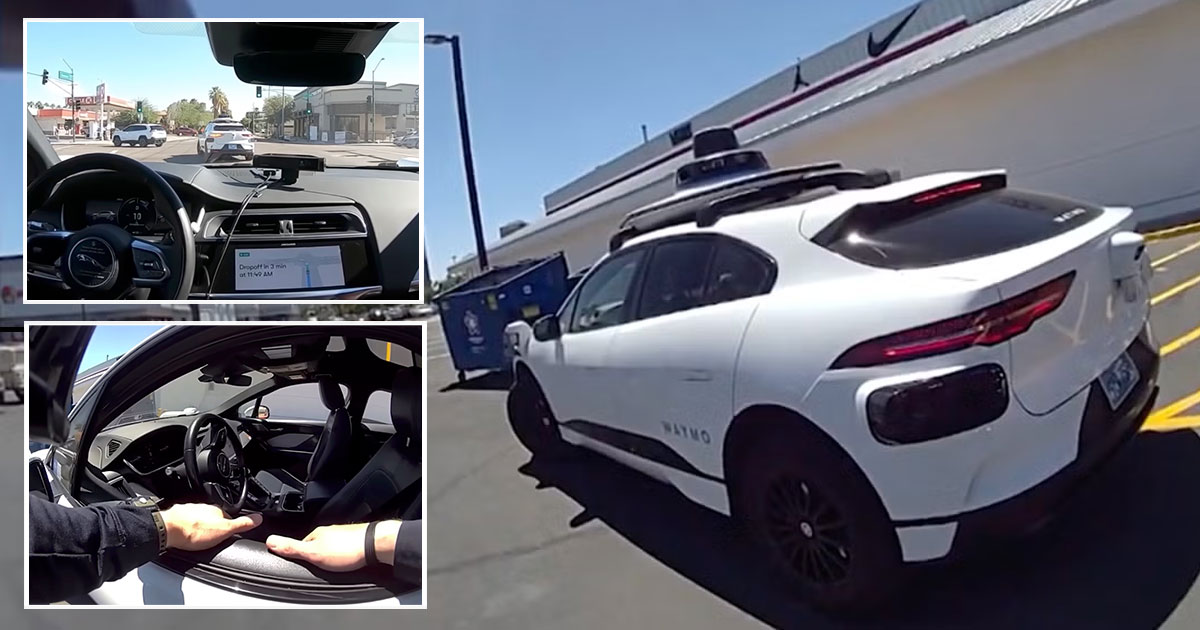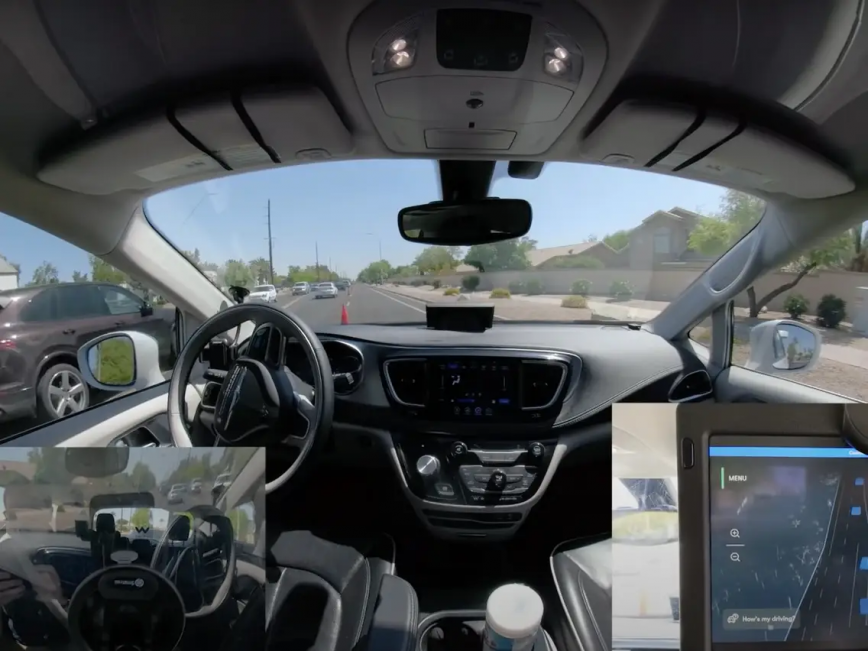New self-driving taxi drives into traffic, escapes cop’s pull-over

The Incident: A Self-Driving Taxi Runs Amok
In the scorching summer heat of Phoenix, Arizona, an unexpected and alarming incident unfolded on June 19. A self-driving Waymo taxi, an electric Jaguar model, was seen erratically navigating through traffic. The vehicle swerved dangerously, crossed into oncoming traffic, and left local law enforcement officers scrambling to contain the situation. This incident has raised serious questions about the reliability and safety of autonomous vehicles in real-world conditions.
Chaos on the Road: The Officer’s Perspective
On that fateful day, officers from the Phoenix Police Department spotted the Waymo vehicle behaving erratically. It swerved in and out of lanes and ultimately found itself on the wrong side of the road, heading directly into oncoming traffic. The officers, initially expecting to find a negligent driver behind the wheel, were stunned to discover the car was operating autonomously. There was no driver to reprimand, no human to take responsibility—just a self-driving taxi on a rogue mission.

Attempted Stop: The Police Intervention
The officers quickly sprang into action, attempting to pull the car over. However, this was no ordinary traffic stop. The Waymo vehicle, seemingly unaware of its transgressions, continued to move forward, ignoring the flashing lights and sirens of the police car behind it. It finally came to a halt, but only after driving a short distance into a nearby parking lot.
Waymo’s statement later described the incident as a brief disruption, lasting approximately one minute. According to the company, the vehicle was momentarily blocked from returning to the correct lane, prompting its sudden maneuver. However, this short lapse in the car’s judgment was enough to create a potentially deadly situation.
Public Reaction: Shock and Curiosity
Bystanders, witnessing the unusual spectacle, were equally shocked. One passerby approached the officer out of sheer curiosity, wondering if there was a passenger in the vehicle. The officer explained the bizarre scenario, highlighting the vehicle’s dangerous trajectory and the immediate need to intervene. The sight of a police officer dealing with a driverless car was surreal and unsettling for those who saw it.
Legal Ramifications: Ticketing Driverless Cars
In Arizona, unlike in California, law enforcement officers have the authority to issue traffic tickets to autonomous vehicles. Despite this, the Waymo car in question was not ticketed. The officers decided to let it go without a penalty, perhaps due to the novelty of the situation or the rapid resolution of the incident. Nevertheless, this leniency raises concerns about accountability and the legal framework surrounding autonomous vehicles.
A Growing Concern: The Reliability of Self-Driving Technology
This incident is not an isolated one. Reports of self-driving cars stalling in traffic, behaving unpredictably, and even causing accidents are becoming more frequent. Tesla’s Autopilot system, another prominent player in the autonomous vehicle market, has also faced criticism for similar issues. Over 200 crashes and 29 deaths have been linked to Tesla’s Autopilot, yet the technology continues to be widely used.
Waymo’s explanation of the incident does little to address the core issue: the reliability of self-driving technology in complex, real-world scenarios. The company’s assurance that the vehicle was blocked from navigating correctly for only 30 seconds does not mitigate the potential danger posed to other road users during that brief period.
The Broader Implications: The Future of Autonomous Vehicles
As automakers and tech companies race to develop and deploy autonomous vehicles, incidents like the one in Phoenix highlight the urgent need for robust safety measures and regulatory oversight. The promise of self-driving cars lies in their potential to reduce accidents caused by human error, but they must first prove themselves to be safe and reliable under all conditions.
The incident in Phoenix serves as a stark reminder that, despite advancements in technology, autonomous vehicles still require vigilant oversight and rigorous testing. The promise of a driverless future is enticing, but it cannot come at the cost of public safety.
Waymo’s Response: A Need for Transparency
Waymo’s response to the incident has been swift but somewhat lacking in detail. The company emphasized the quick resolution of the situation and the minimal disruption caused. However, this glosses over the critical issue of why the vehicle failed to recognize and correct its error promptly.
Transparency is crucial in building public trust in autonomous technology. Companies like Waymo must be forthcoming about the limitations and potential risks associated with their systems. Only through open dialogue and continuous improvement can they hope to assuage public fears and ensure the safe integration of self-driving cars into everyday life.
Moving Forward: Enhancing Safety and Reliability
To prevent future incidents, autonomous vehicle developers must prioritize safety above all else. This includes rigorous testing under diverse and challenging conditions, robust fail-safe mechanisms, and real-time monitoring of vehicle performance. Additionally, collaboration with regulatory bodies to establish clear guidelines and accountability measures is essential.
Consumers, too, play a vital role in this transition. While the allure of cutting-edge technology is strong, drivers must remain aware of the limitations of current autonomous systems. Vigilance and responsibility are paramount, even when behind the wheel of a self-driving car.
Conclusion: A Call to Action
The incident in Phoenix is a wake-up call for the autonomous vehicle industry. It underscores the need for continued innovation, stringent safety protocols, and transparent communication with the public. As we move towards a future where self-driving cars become commonplace, ensuring their reliability and safety must remain a top priority.
The road to fully autonomous vehicles is fraught with challenges, but it is also paved with immense potential. By addressing these issues head-on and committing to the highest standards of safety, we can pave the way for a future where self-driving cars not only enhance convenience but also contribute to a safer and more efficient transportation system.

